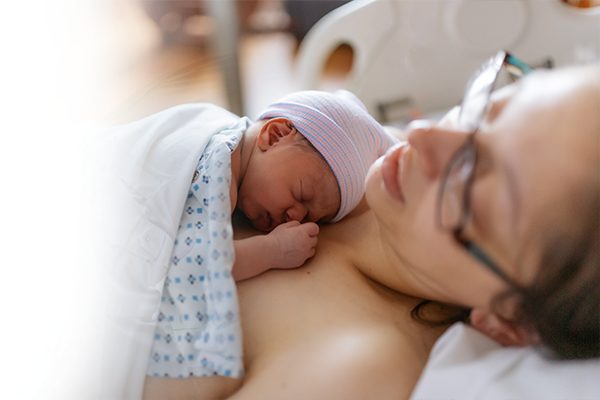Postpartum is a period of intense recovery from both natural childbirth and cesarean section. At that time, the woman feels severe fatigue, a decrease in energy, and her body slowly returns to its pre-partum state.
Postpartum usually lasts about 2 months after the birth of the offspring. After childbirth, a woman’s uterus begins to contract, which can cause pain. This discomfort can be especially noticeable in while breastfeeding a baby. The newborn, sucking on the mother’s nipple, stimulates the secretion of hormones that enhance uterine contraction after birth.
In the first hours after delivery, the excretion of postpartum feces begins. Postpartum bleeding is related to regeneration and healing of the endometrium. In the first days of after childbirth, the color of the so-called. feces is more intense and may be accompanied by blood clots. From time the blood turns more brown until it disappears completely. Increased bleeding is observed after heavy exercise.
Postpartum after a cesarean section goes a little differently than after a natural childbirth Usually after such a way the baby is born, the mother still lies in the hospital for several days. She feels more sore, which is related to the operation itself and wound healing. After childbirth, it is particularly important to take care of intimate hygiene, as well as the cesarean section wound, to avoid possible infections and prevent the growth of bacteria…. Replace the pads several times a day according to individual needs and the intensity of bleeding.
Uterine contractions during puerperium
Contractions of the uterus during the puerperium are related to its contraction. This is because it increases in size during pregnancy, which must return to its previous state after delivery. Women after childbirth often feel strong tension in the lower abdomen, which gradually passes. Contractions are exacerbated during breastfeeding, for example, when oxytocin, a hormone that stimulates uterine contraction, is secreted.
Postpartum pains
Perineal pain after childbirth is a consequence of stretching it, cutting it, or having it rupture during childbirth. Many postpartum women who have had their perineum sutured are afraid to defecate freely from fear of stitches and the risk of them coming apart. Urinary excretion causes a strong burning sensation and pinching. During pregnancy and childbirth, anal varices, known as “varicose veins,” often appear. Hemorrhoids, which cause constipation and difficulty in defecation. For constipation after childbirth, midwives suggest glycerin suppositories. Postpartum after childbirth is also accompanied by pains in the lower abdomen, resembling those accompanying women before their period. A lot of moms also experience pain and swelling of the breasts after having a baby. The main reason for this phenomenon is increased milk production after childbirth, but also milk stasis, hormonal fluctuations, blockage of milk ducts, and in rarer cases- breast infection or abscess. It is worthwhile to consult your midwife or gynecologist if you experience alarming symptoms.
Fertility after childbirth
Fertility after childbirth is a very individual issue. However, it is a myth that a breastfeeding woman is protected from getting another pregnancy. Yes, the hormone prolactin, secreted during breastfeeding and suckling, inhibits ovulation, but this depends on the frequency of feeding. If the mother breastfeeds the child and supplements it with modified milk, then conception can occur even within the first few months after birth.
See also: Non-invasive and invasive prenatal testing in pregnancy.
Rate this article:










